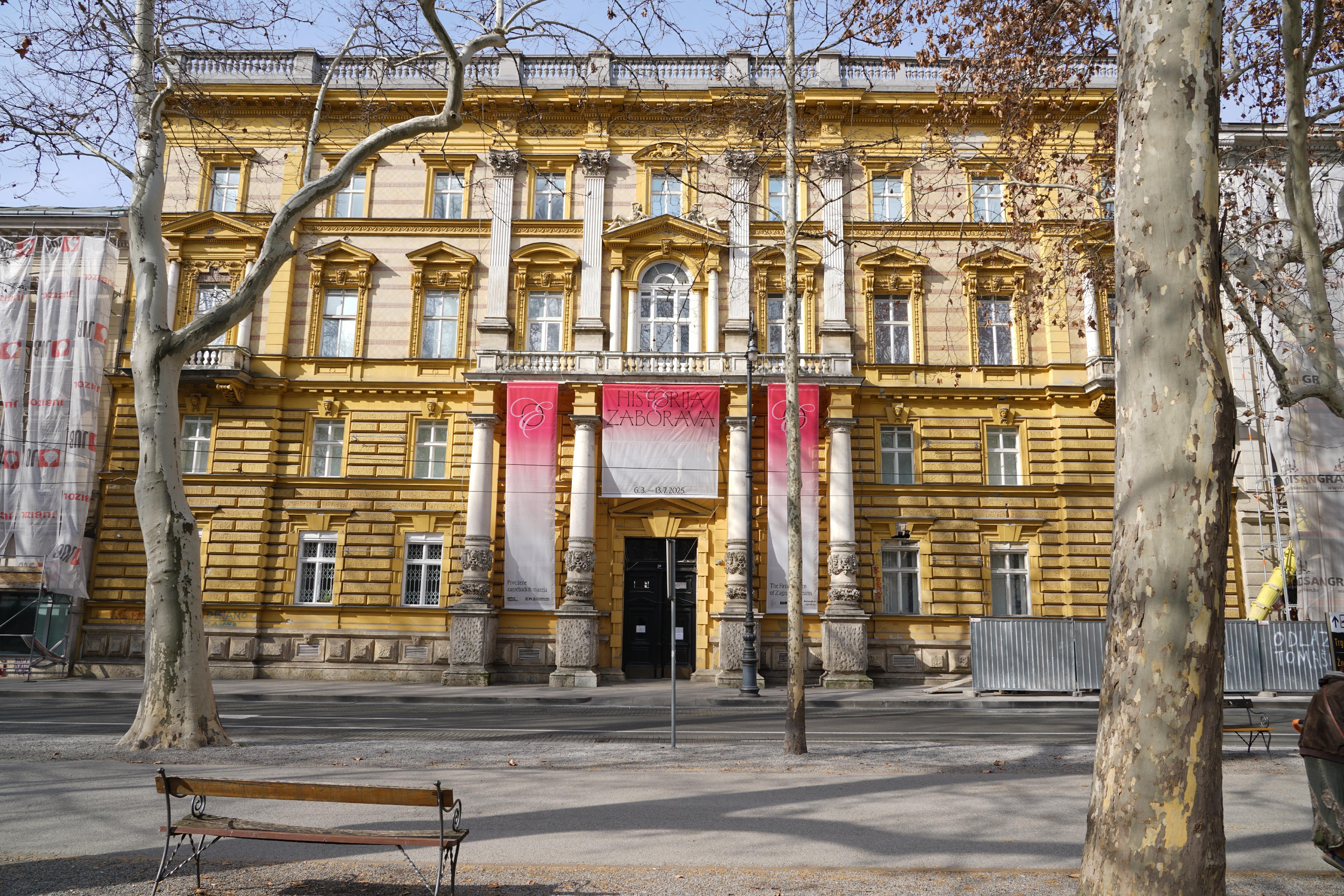Zagreb Archaeological Museum
First off, it was named the National Museum when this was part of the Austrian Empire in 1836 and was housed in the State Academy Mansion in a square I cannot find on any map, go figure. In 1866, it was renamed to the State Institute of Croatia, Slavonia and Dalmatia, but it didn't change in physical collections or presentation. It became independent in 1878 inside the state institutions, and became its completely own thing in 1939 when the parent organizations were dissolved (wonder who caused that... in 1939...)Then in 1945, it was moved to the current mansion, before being heavily damaged in the 2020 earthquake, but lucky for Rob, it was recently repaired and re-opened.
The museum contains items from and related to Croatia, starting in the Stone Age, through the 1900s. The Greek, Etruscans, and Roman eras are the most prominent in the museum.
The Arrival - Park Josipa Juraj Strossmayera
In the cultural lower area of Zagreb (vs. the Upper oldest area) is a long park with many many museums, and only 3 blocks from my hotel, so I walked. Easy and safe.The Museum
At first experience, you're not going to be impressed, the entry is quite underwhelming and the first floor is a shifting temp exhibit. Floors 2 and 3 though, will satiate your ancient desires quite well.First Floor - Women's Impact on the Museum
Starting in the late 1800s, Croatia actually allowed women to get an education (they were pretty patriarchal before that) and initial degrees from universities were issued for the first time in history. That brought those women directly to the museum, and they were brought in very early in the history of women's rights, which is a kudos for the institution.There is a very large and immersive display on some of these women and their impact. Visiting on Internation Womens' Day didn't hurt.
Second Floor - Bronze, Greek and Roman
The second floor has a huge amount of Bronze Age items including the Greeks from about 1000BC to 300BC. Next is the Roman occupation, although they had ignored the place because (according to them) there wasn't much benefit to taking it over.Third Floor - Egyptian and Etruscan
Now, the third floor has the Egyptian and Etruscan displays. The amount of Egyptian goods and items is quite striking for this area of the world, but the Etruscan is astounding, showing connections to the ancient Mediterranean that were unexpected.Courtyard
Now with limited space and so many items from 2500 years of statues, a lot of the stone ones were placed outside. A conservator's nightmare I think, but hey, I guess it's like when you have this much, who cares?
Gospodice Uciteljice, The teachers, first education and job afforded women
Rodena Zamuzejski Posao, the first woman at the museum, hired for specialty knowledge and not for degrees
Examples of misogynistic works in Croatia
The 1925 Paris Exhibition, where museum women finally were of note
Time line of significant events
The Greek pottery we all know
Bronze Greek soldier's helmet
The many different types of Roman helmets stationed here
Various Roman goods the empire made available
The weapons that kept Rome on top
Excellently preserved sarcophagi
Stelahs to be remembered
The Zagreb Mummy, actually Egyptian, but was wrapped in an Etruscan manner
The largest existing continuous Etruscan text known
Barely protected from the elements, but still in good shape
Each one is only noted with QR codes, but most seems to be funerary markers
Yes, the shop is in the courtyard
Rather decent reproductions, oh my lack of baggage allowance to fill my office
Summary
While a small location, it is quite intense in its amount of items, the Egyptian connection was really intriguing and now I find myself trying to get more information on that.Probably not a spot for bringing the kids, but for history geeks, it's ideal.

